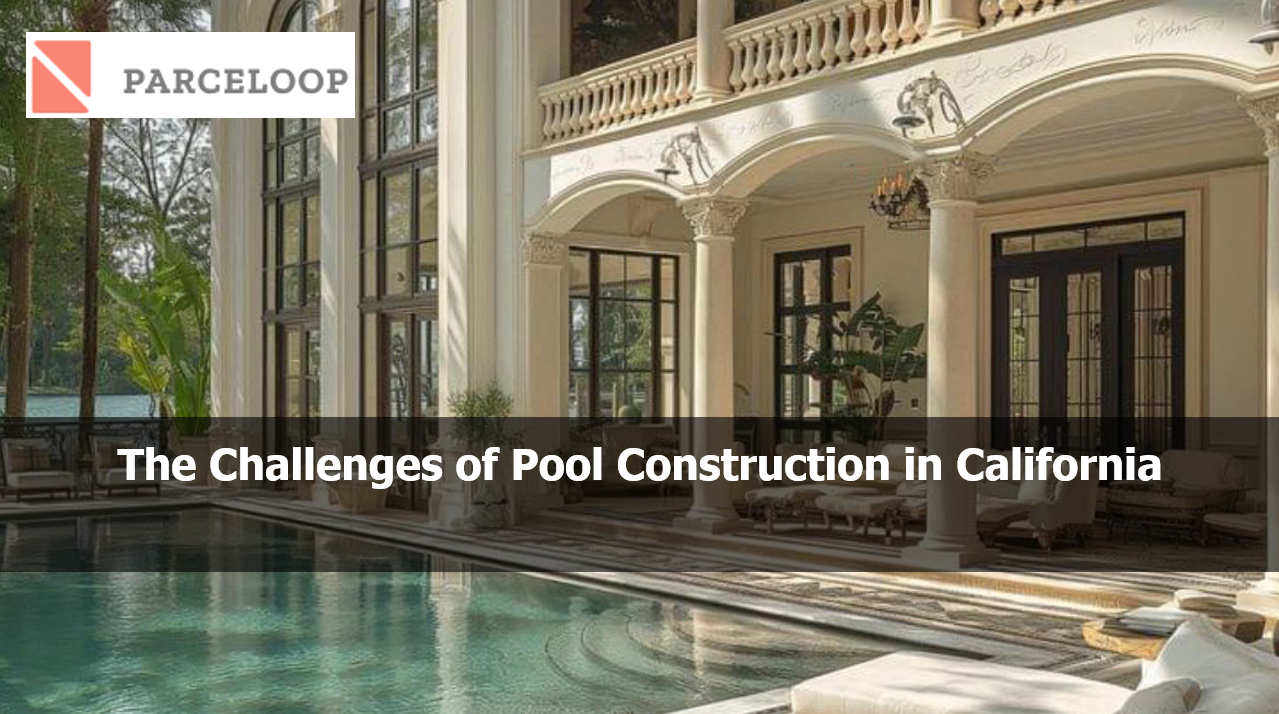Building a swimming pool in California can transform your backyard into a private oasis and enhance the value of your property. However, the process involves considerable planning and strict adherence to local regulations. This guide will walk you through every step of building a pool in California, ensuring you understand the complexities involved and can make informed decisions.

Securing Construction Permits
Before you break ground on your new pool, it’s crucial to secure the necessary permits. The process can be complex, as there are several permits and regulations specifically tied to pool construction. The exact permits you need may vary depending on your property’s location, the pool’s size, and the pool type. Typically, you’ll require building, electrical, plumbing, and grading permits.
To apply for these permits, you must submit a range of documents to your local building department, including a site plan, pool design plans, and engineering calculations. The permitting process can often be lengthy, taking several weeks or even months, so it’s important to start early. Working with a licensed contractor can simplify this process, as they can handle all the permits and paperwork, saving you time and hassle.
Design Considerations and Planning
The design phase is your opportunity to tailor your pool to your lifestyle and preferences. Consider the primary use of the pool—is it for exercise, relaxation, or entertaining guests? This will influence its shape, size, and features. Hiring a skilled pool designer or architect can ensure your vision complies with safety standards and maximizes your space effectively.
In California, safety and environmental regulations heavily influence pool design. For instance, energy-efficient pumps and non-toxic building materials might be required to meet local codes. During the planning stage, also think about the long-term maintenance costs and how the pool's design might impact your utility bills and upkeep efforts.
Choosing the Right Construction Partner
Selecting a competent contractor is perhaps the most crucial step. You need a professional who is not only licensed and insured but also has a solid track record in pool construction. Request references and review their past projects to assess their quality and reliability. It’s vital to have detailed discussions with your contractor about every aspect of the project, including timelines, budget, materials, and equipment installation, to ensure there are no misunderstandings.
When interviewing contractors, ask about their process for handling unexpected issues such as weather delays or material shortages. Ensure they communicate regularly and transparently to keep you updated on the project's progress. A good contractor will make the construction phase smoother and less stressful for you.
Final Touches: Landscaping and Additional Features
After the pool itself is constructed, focus on landscaping and additional features that enhance the functionality and aesthetics of your pool area. Consider adding lighting for evening swims, a heating system for year-round use, or water features like waterfalls or fountains for a touch of elegance.
Professional landscaping can help integrate your new pool into your overall outdoor design. Think about the types of plants and outdoor furniture that will complement the pool and create a cohesive look. This is also the time to consider privacy features such as fencing or hedging, especially in densely populated areas.
Ongoing Maintenance and Safety
Maintaining your pool is crucial for ensuring water quality and safety. Regular maintenance tasks include cleaning, monitoring chemical levels, and inspecting safety equipment. California law requires all residential pools to have at least one safety feature, such as a perimeter fence with self-closing gates, a pool cover, or an alarm system to prevent accidents.
Educate yourself and your family about pool safety practices and consider enrolling in water safety courses. Regularly check that all safety equipment is in working order and update or replace anything that no longer meets safety standards. Proper maintenance not only extends the life of your pool but also ensures it remains a safe, enjoyable place for everyone.
Constructing a pool in California is a significant undertaking that demands meticulous planning and close attention to detail. By understanding and complying with local regulations, choosing the right professionals, and planning for ongoing maintenance and safety, you can ensure your pool project is successful, and your new aquatic addition brings joy for many years.
Individual Approach with Parceloop
In the realm of pool construction and landscaping, a tailored approach that marries client expectations with expert insights is pivotal. Similar to the personalized solutions offered in terracing projects, Parceloop provides a customized service that adheres to the highest standards in pool landscaping. They understand the unique requirements of each project, ensuring that the solutions delivered are practical, beautiful, and sustainable for the long haul.
Additionally, Parceloop offers an innovative online configurator that simplifies the planning process and enhances the feasibility assessment of pool projects. This tool allows for quick and accurate estimates tailored to the specific needs and preferences of each client.
Parceloop's cutting-edge approach and digital capabilities make creating a seamlessly integrated pool and landscape that meets your expectations and blends beautifully with the natural surroundings more accessible than ever.